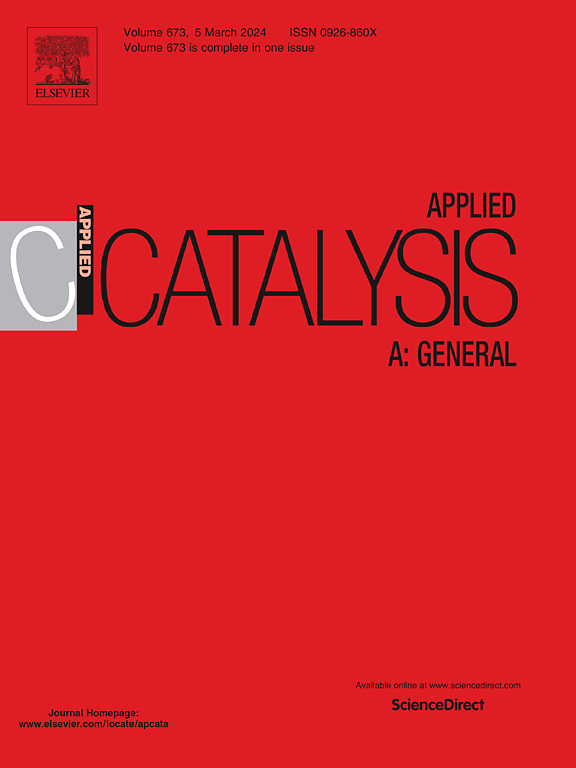Oxidative conversion of cyclohexane to olefins on hexagonal boron nitride
IF 4.8
2区 化学
Q2 CHEMISTRY, PHYSICAL
引用次数: 0
Abstract
The oxidative conversion of cyclohexane (OCC) to valuable olefins presents an innovative strategy for efficient utilization, overcoming its inherent resistance to traditional cracking methods. This study demonstrates the superior performance of hexagonal boron nitride (h-BN) in OCC, especially mitigating deep oxidation and dehydrogenation to achieve high olefin selectivity. At 550°C, with 32.5 % cyclohexane conversion, cyclohexene selectivity reaches 49.1 % and open-ring alkenes account for 20.1 %. The reaction is driven by gas-phase free radical mechanism, where higher reaction temperature and alkyl-oxygen ratio favor forming open-ring alkenes while maintaining high cyclohexene selectivity. The weak adsorption of olefins on h-BN and the suppression of deep oxidation and dehydrogenation through radical-mediated pathways are crucial for its exceptional performance. This approach effectively minimizes further oxidation and dehydrogenation of radicals and olefins, enhancing olefin selectivity. These findings provide a promising pathway for efficient cyclohexane utilization and advance the understanding of h-BN’s catalytic role in alkane oxidation process.
六方氮化硼催化环己烷氧化转化烯烃的研究
环己烷(OCC)氧化转化为有价烯烃,克服了传统裂解方法固有的阻力,提出了一种高效利用的创新策略。本研究证明了六方氮化硼(h-BN)在OCC中的优异性能,特别是减轻了深度氧化和脱氢,实现了高烯烃选择性。在550℃,环己烷转化率为32.5%时,环己烷的选择性达到49.1 %,开环烯烃的选择性达到20.1 %。反应由气相自由基驱动,较高的反应温度和烷基氧比有利于形成开环烯烃,同时保持较高的环己烯选择性。烯烃在h-BN上的弱吸附和通过自由基介导途径抑制深度氧化和脱氢是其优异性能的关键。这种方法有效地减少了自由基和烯烃的进一步氧化和脱氢,提高了烯烃的选择性。这些发现为环己烷的高效利用提供了一条有希望的途径,并促进了对h-BN在烷烃氧化过程中的催化作用的认识。
本文章由计算机程序翻译,如有差异,请以英文原文为准。
求助全文
约1分钟内获得全文
求助全文
来源期刊

Applied Catalysis A: General
化学-环境科学
CiteScore
9.00
自引率
5.50%
发文量
415
审稿时长
24 days
期刊介绍:
Applied Catalysis A: General publishes original papers on all aspects of catalysis of basic and practical interest to chemical scientists in both industrial and academic fields, with an emphasis onnew understanding of catalysts and catalytic reactions, new catalytic materials, new techniques, and new processes, especially those that have potential practical implications.
Papers that report results of a thorough study or optimization of systems or processes that are well understood, widely studied, or minor variations of known ones are discouraged. Authors should include statements in a separate section "Justification for Publication" of how the manuscript fits the scope of the journal in the cover letter to the editors. Submissions without such justification will be rejected without review.
 求助内容:
求助内容: 应助结果提醒方式:
应助结果提醒方式:


